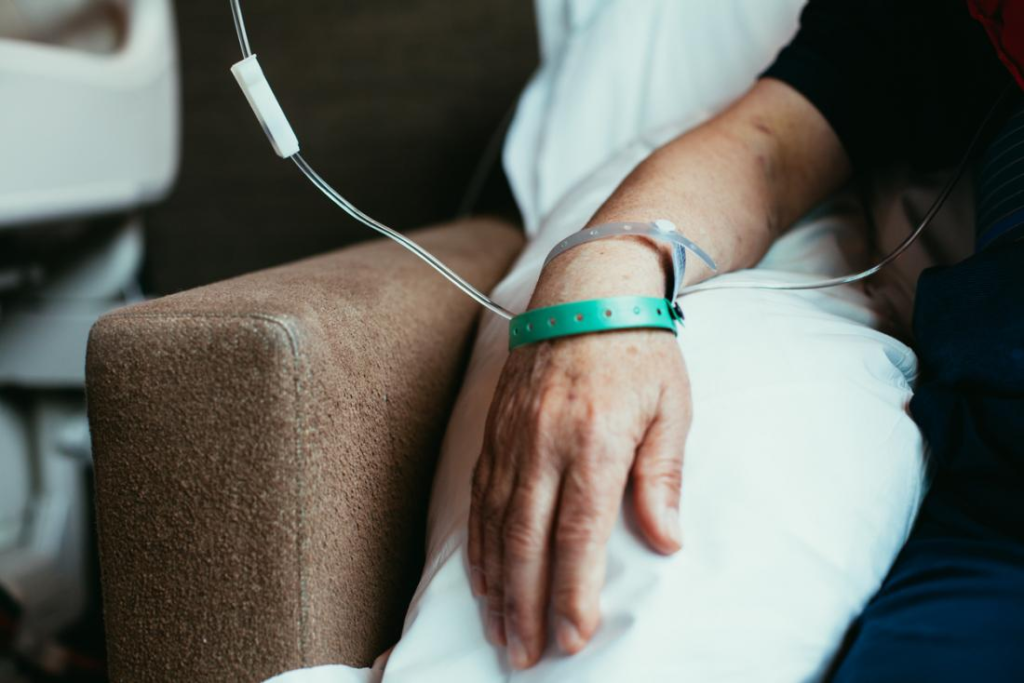What is Lymphoma, the most common blood cancer in adults, and how can it be detected?

Worldwide, Lymphoma is one of the leading causes of death.
In 2020 almost 10 million people lost their lives due to cancer and its different variants, reports the World Health Organization.
Lung cancer caused the most death last year, which is 1.8 million, but the one that registered the most significant number of cases was breast cancer, with 2.26 million homes.
But Lymphoma is the most common type of blood cancer that is on the rise and is the most common among adults.
What is Lymphoma
Three different main types of blood cancer are as follows: leukaemia, myeloma and Lymphoma. The latter, in turn, is divided into two main types: Hodgkin’s Lymphoma and non-Hodgkin’s Lymphoma. It is named because it was discovered by the British pathologist Thomas Hodgkin (1798-1866) in 1832 after analysing several people affected by lymph node cancer.
It was initially called “Hodgkin’s disease” but was renamed “Hodgkin’s lymphoma” in the late 20th century.
As explained by the Lymphoma Association of the United States, this disease is caused due to a lesion in the DNA of a lymphocyte. It is a white blood cell responsible for defending us against infections.
The change in the lymphocyte makes it a lymphoma cell. These clumps together to form masses of cells and tumours and often collect in lymph nodes or other body parts.
To understand this concept, “Let’s assume that the body is like a house, and leukaemia affects the entire house, while lymphoma affects a room. In one place, one part of the body, which are the lymph nodes,” the doctor tells BBC Mundo.
Hodgkin and non-Hodgkin Lymphoma
Hodgkin lymphoma spreads orderly from one group of lymph nodes to others. In contrast, non-Hodgkin Lymphoma messily spreads through the lymphatic system, explains the Centers for Disease Control and Prevention (CDC).
Worldwide, each year more than 735,000 people are diagnosed with the disease. According to data from the Lymphoma Coalition, in more than 50 countries, a global network of some 80 organisations provides information and support to lymphoma patients.
These numbers, supported by the Global Cancer Observatory (Globocan), show that Lymphoma is the most common blood cancer disease among adults.
In non-Hodgkin’s lymphomas, the highest percentage of cases,” says surgical oncologist Leandro Nikisch, an Argentine Association of Surgery member.
“And there are more than 80 subtypes. There are many different tumours, and with the advent of molecular analysis and other studies, more and more characteristics of lymphomas are being discovered that are different from each other,”
Specialists point out that cases of Certain lymphomas are rising, such as chronic lymphatic leukaemia (CLL).
“CLL is a lymphoma, which we call lymphoma-leukaemia, which is very common, and we are seeing that, because people are undergoing more tests for different reasons that have nothing to do with cancer, they are accidentally diagnosed,” Casulo exemplifies.
“In that sense, we see more cases, but even so, when we analyse it at a general level, (Lymphoma) continues to be among the number nine or ten of the most common types of cancer. The most frequent type of cancer is ‘Organ cancers “, clarifies the doctor.
Swollen lymph nodes are the main symptoms of organ cancer, especially in the part of the body where the Lymphoma begins to grow.
The most common areas where we can feel lymph nodes with the fingers are the armpit, groin, behind the ears, back of the head and the neck. But there are also many lymph nodes in other body areas, such as the chest and abdomen.
Other than swollen nodes, Lymphoma symptoms may be similar to other diseases, such as covid-19 and flu. It includes fever, night sweats, cough, tiredness, itching, and weight loss.
The most curable type of cancer is Hodgkin lymphoma. But, its cases are still unknown.
It is also impossible to prevent, and you cannot get it from another person. This type of cancer is usually diagnosed between the ages of 20 and 40 and becomes more common after age 60.
Meanwhile, for non-Hodgkin’s Lymphoma, treatment depends on the characteristics as there are many types.
“Fortunately, almost all lymphomas have treatment. There are very few that cannot be cured, but unfortunately, cannot it prevented because it is something spontaneous,” explains Dr Carla Casulo.
“This is a slightly complicated disease because there are different lymphomas, and some are aggressive, and others are completely indolent,” he says.
The usual recommendation is to see a doctor suspecting something is wrong with the body.







